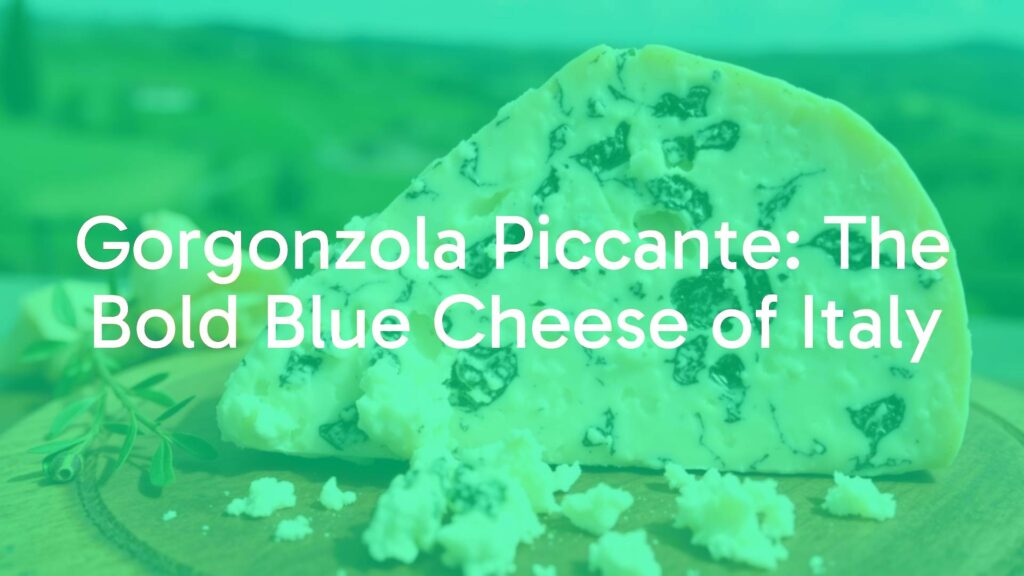Understanding Gorgonzola Piccante
Among Italy’s most renowned blue-veined cheeses, Gorgonzola Piccante stands out for its robust character and tantalizing sharpness. Unlike its milder counterpart, Gorgonzola Dolce, this variety appeals to cheese aficionados seeking pronounced flavors and a lingering piquancy. Often referred to as ‘mountain Gorgonzola’ or ‘Gorgonzola naturale,’ its unique taste and crumbly texture have secured a cherished place in Italian culinary tradition.
Origins and Historical Significance
Gorgonzola’s roots trace back to the town of the same name in Lombardy, just outside Milan. Its production dates as far back as the 9th century, making it one of the world’s oldest blue cheeses. Over centuries, the technique spread across the regions of Piedmont and Lombardy, becoming a protected designation (DOP) cheese, which ensures its heritage and traditional production methods are preserved. Gorgonzola Piccante was historically favored in northern Italian households for its ability to mature well, providing a stronger, more complex flavor than its sweeter sibling.
What Distinguishes Gorgonzola Piccante?
This cheese is immediately recognizable by its firm, crumbly body marbled with blue-green veins of the Penicillium mold. Aged for up to 12 months, its rind develops a rugged, reddish-gray hue. The flavor profile is assertive: tangy, spicy, and earthy, often with subtle notes of nuts and dried fruit. Unlike milder blue cheeses, the aroma is more pronounced, reflecting the extended maturation and traditional, unhurried production techniques.
Production and Craftsmanship
Authentic Gorgonzola Piccante is made from cow’s milk sourced from the valleys of Lombardy and Piedmont. During production, natural blue molds are added to the curds, and the cheese is pierced with needles to facilitate the characteristic veining. The wheels rest in cool, humid cellars, allowing the blue veins to proliferate and the flavors to develop depth and intensity. Strict regulations under the DOP status guard the integrity of these traditional methods, ensuring a consistently exceptional product.
Traditional Enjoyment and Culinary Uses
Italians have long savored Gorgonzola Piccante simply sliced and served with hearty, rustic bread or polenta—the robust flavors pair especially well with the earthy sweetness of walnuts, pears, or figs. Its piquancy makes it an ideal addition to antipasto platters, where it stands up to intensely flavored cured meats. In cooking, a little goes a long way: its assertive character enriches risottos, stuffed pastas, and sauces for steak or vegetables, providing a bold counterpoint to creamy or rich dishes.
Pairings and Serving Ideas
Gorgonzola Piccante shines alongside full-bodied Italian reds, such as Barolo or Amarone, whose tannins balance the cheese’s salt and spice. Sweet wines like Moscato or Passito offer an elegant contrast, tempering the intensity with gentle fruit notes. For a classic northern Italian experience, serve alongside polenta, roasted chestnuts, or in salads with bitter greens. Always allow the cheese to come to room temperature before serving to release its full array of aromas and flavors.
Cultural Importance and Regional Links
Beyond its gustatory delights, Gorgonzola Piccante holds a place of pride in regional identity and Italian gastronomy. Celebrated in food festivals and artisan markets, its production supports local dairies and generations of cheese makers. Whether enjoyed at a countryside trattoria or as part of festive occasion spreads, this cheese connects food lovers to the agricultural landscapes and rich traditions of northern Italy.

